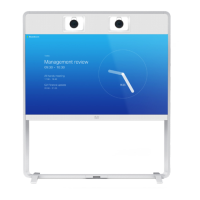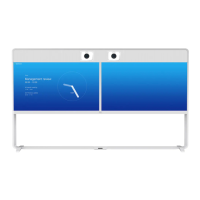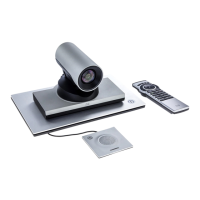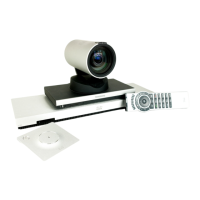
Do you have a question about the Cisco TelePresence MX700 and is the answer not in the manual?
| Product Type | Video conferencing system |
|---|---|
| Frame Rate | Up to 60 fps |
| Display | Dual 55-inch LCD |
| Audio | Integrated speakers and microphones |
| Video Standards | H.264 |
| Network | Ethernet |
| Connectivity | HDMI, USB |
| Control | Touch 10 control unit |
| Video Resolution | 1080p at 60 fps |
| Zoom | 12x optical zoom |
| Codec | H.264 |
| Network Protocols | SIP |
| Power Consumption | 300W |
| Weight | 90 kg |
Introduces the Application Programmer Interface (API) and serves as a reference guide for commands.
Overview of new and changed system settings, features, and improvements in CE8.0.
Details new, removed, and modified xConfiguration commands in CE8.0.
Provides a top-level view of mechanisms supported by the codec API.
Describes various methods to access the codec API and required configurations.
Explains how to use top-level commands like xConfiguration, xCommand, xStatus, etc.
Lists all xConfiguration commands with examples of default or example values.
Details settings for audio inputs, outputs, microphones, and default volumes.
Covers settings for camera IDs, backlight, brightness, focus, gamma, mirror, and white balance.
Configuration settings for DNS, IEEE802.1X, IP addressing, and VLANs.
Settings for main video source, camera control, input types, and monitor layouts.
Provides a complete list of all xCommand types with parameters.
Commands for accepting, disconnecting, holding, and managing calls.
Commands for controlling camera position, presets, and autofocus.
Commands for displaying messages, prompts, and text lines on the UI.
Commands for controlling active speaker PiP, input sources, and video layouts.
Details xStatus commands and their responses for system and process information.
Provides status information for audio inputs, outputs, and microphones.
Shows status details for calls, including answer state, duration, and protocol.
Provides status information for CDP, DNS, Ethernet, and IP connectivity.
Shows status for SIP registration, call forwarding, and proxy communication.
Explains how to add and manage startup scripts for codec boot procedures.
Lists administrative control commands for codec management and diagnostics.
Provides guidance on finding user documentation on the Cisco website.












